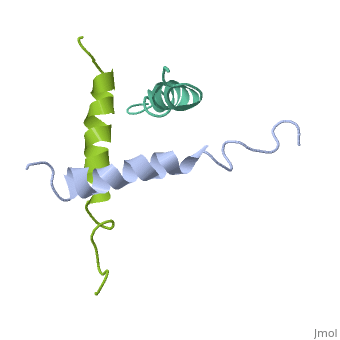1bh0
From Proteopedia
(Difference between revisions)
| Line 1: | Line 1: | ||
| - | [[ | + | ==STRUCTURE OF A GLUCAGON ANALOG== |
| + | <StructureSection load='1bh0' size='340' side='right' caption='[[1bh0]], [[Resolution|resolution]] 3.00Å' scene=''> | ||
| + | == Structural highlights == | ||
| + | <table><tr><td colspan='2'>[[1bh0]] is a 1 chain structure. Full crystallographic information is available from [http://oca.weizmann.ac.il/oca-bin/ocashort?id=1BH0 OCA]. For a <b>guided tour on the structure components</b> use [http://oca.weizmann.ac.il/oca-docs/fgij/fg.htm?mol=1BH0 FirstGlance]. <br> | ||
| + | </td></tr><tr><td class="sblockLbl"><b>Resources:</b></td><td class="sblockDat"><span class='plainlinks'>[http://oca.weizmann.ac.il/oca-docs/fgij/fg.htm?mol=1bh0 FirstGlance], [http://oca.weizmann.ac.il/oca-bin/ocaids?id=1bh0 OCA], [http://www.rcsb.org/pdb/explore.do?structureId=1bh0 RCSB], [http://www.ebi.ac.uk/pdbsum/1bh0 PDBsum]</span></td></tr> | ||
| + | <table> | ||
| + | <div style="background-color:#fffaf0;"> | ||
| + | == Publication Abstract from PubMed == | ||
| + | We have designed and synthesized eight compounds 2-9 which incorporate various amino acid residues in positions 17, 18, and 21 of the glucagon molecule: 2, [Lys17]glucagon amide; 3, [Lys18]glucagon amide; 4, [Nle17,Lys18,Glu21]glucagon amide; 5, [Orn17,18, Glu21]glucagon amide; 6, [d-Arg17]glucagon; 7, [d-Arg18]glucagon; 8, [d-Phe17]glucagon; and 9, [d-Phe18]glucagon. Compared to glucagon (IC50 = 1.5 nM), analogues 2-9 were found to have binding affinity IC50 values (in nM) of 0.7, 4.1, 1.0, 2.0, 5.0, 25.0, 43.0, and 32.0, respectively. When these compounds were tested for their ability to stimulate adenylate cyclase (AC) activity, they were found to be full or partial agonists having maximum stimulation values of 100, 100, 100, 100, 87, 78, 94, and 100%, respectively. On the basis of the X-ray crystal structure of [Lys17,18,Glu21]glucagon amide reported here, the ability to form a salt bridge between Lys18 and Glu21 is probably key to their increased binding and second messenger activities. Among the eight analogues synthesized here, only analogue 4 preserves the ability to form a salt bridge between Lys18 and Glu21. However, since these modifications are minor they do not seem to change the amphiphilic character of the C-terminus, allowing these analogues to reach 78-100% stimulation in the adenylate cyclase assay. Biological data from analogues 6-9 supports the idea that position 18 of glucagon may influence binding only, while position 17 may influence both receptor recognition and transduction. | ||
| - | + | Structure-function studies on positions 17, 18, and 21 replacement analogues of glucagon: the importance of charged residues and salt bridges in glucagon biological activity.,Sturm NS, Lin Y, Burley SK, Krstenansky JL, Ahn JM, Azizeh BY, Trivedi D, Hruby VJ J Med Chem. 1998 Jul 16;41(15):2693-700. PMID:9667960<ref>PMID:9667960</ref> | |
| - | + | From MEDLINE®/PubMed®, a database of the U.S. National Library of Medicine.<br> | |
| - | + | </div> | |
| - | + | ||
| - | + | ||
| - | + | ||
| - | + | ||
==See Also== | ==See Also== | ||
*[[Glucagon|Glucagon]] | *[[Glucagon|Glucagon]] | ||
| - | + | == References == | |
| - | == | + | <references/> |
| - | < | + | __TOC__ |
| + | </StructureSection> | ||
[[Category: Ahn, J M.]] | [[Category: Ahn, J M.]] | ||
[[Category: Azizeh, B Y.]] | [[Category: Azizeh, B Y.]] | ||
Revision as of 03:15, 7 August 2014
STRUCTURE OF A GLUCAGON ANALOG
| |||||||||||

